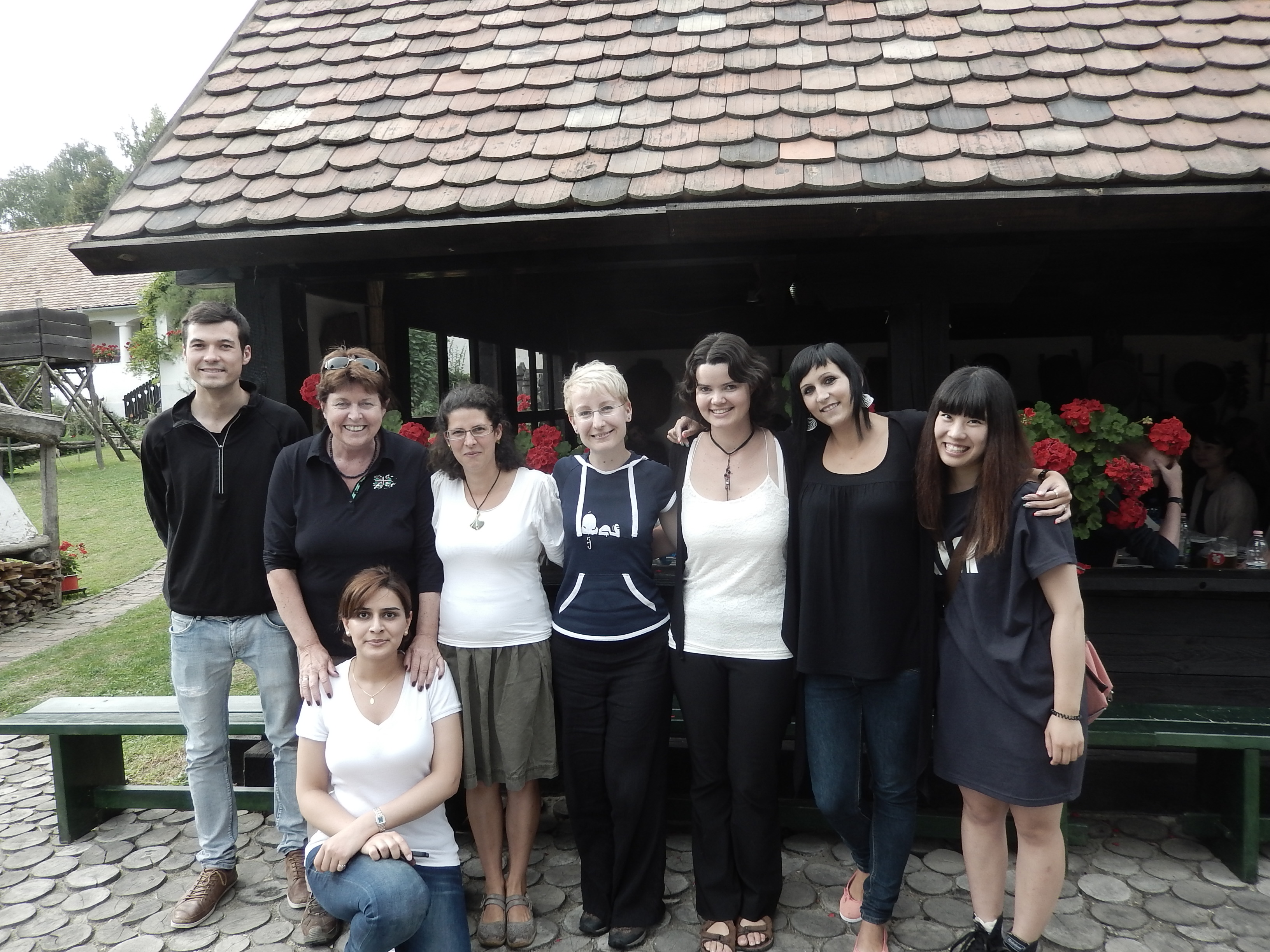Faháztól, faházra, faházszor, faházba…
Now a little grammar… (But only as much, as you need to say what you want to say – so do I tell always to my students.)
The title of this writing could be translated like: “from to wooden house, on the wooden house, with the wooden house, for the wooden house”. It is borrowed from the Hungarian humorist, György Markos. In his parody “Good night tale” he is speaking about his Russian friend, Andrej, who learned Hungarian and often watch over Hungarian children. When he do so, he is telling tales in Hungarian. And than he is saying things like: “They went and went till they arrived from to wooden house, on the wooden house, with the wooden house, for the wooden house. Choose, one will be good!” You can watch it here. (Although you need to understand very good Hungarian for understanding this parody.)
But I want to talk about the problem of Andrej. It seems so that Andrej have some problems with the endings (suffixes) in the Hungarian language. He can’t decide which ending belongs to the word in the sentence. Lot of students have the same difficulty. Andrej solves the problem very easily: he let us (Hungarian speakers) choosing the right ending. And we understand also the message of Andrej. But we amuse ourself not because of the tale, but because of the failures of Andrej. If a foreigner would like to be taken seriously, it is important to use the right ending on the right place. But how to make this?
It is not only the task of the student, it is also the responsibility of the teacher to teach the Hungarian suffixes in a good way. I as a teacher like to start very early with this task, but without making the student uncertain in his speaking. So it is important to learn it step by step:
- One of the first endings which students learn is the -t ending which express the casus accusative. Usually the student is studying it together with some typical verbs and the function “to ask for something” “to get something”. Like:
Kérek egy kávét. (I would like to have a coffee. / I am asking for a coffee.)
Veszek tejet és kenyeret. (I am buying milk and bread.)
Iszom egy kávét. (I am drinking a coffee.)
Eszem egy szendvicset. (I am eating a sandwich.)
If the stundent already understand what this -t ending is, he will ask to typical questions:
1. Do I have to use this only with these few verbs? (No, unfortunatly not.)
2. How can I know when I have to use it?
I do always answer: When you learn a new verb, learn right at that time which ending do this verb need in the sentence. Because it is the verb which is organizing what kind of endings the words will have in the sentence. There are two reasons why this is so important. Firstly it is easier to learn the endings step by step with the new verbs, like learning a list of verbs with endings later. Secondly it is good when the student understand this logic of the language that it is verb who is the “boss” in the sentence. - When we learn new and new endings, we are studying them always together with some typical verbs and situations. For example: The ending -val/-vel (with) is studied always together with the verbs utazik (to travel), közlekedik (to travel with a vehicle), találkozik (to meet). So we can practice it in the communication, in typical situations.
- When we already have a wide repertory of endings, it’s the time for practicing them with drill exercises. Than we can make in every lesson some exercises like this:
én, találkozik, János, belváros
Solution: Én találkozom Jánossal a belvárosban. (I am meeting János in the city centre.)
I always give a list of verbs and their endings in the sentence to make the learning easier. But the student doesn’t have to study everything at that moment, because he learned already a lot of verbs with endings in the communication in typical situations!
(It is an other task to learn the endings which express the places and time (like -ban/-ben; -ba/-be and so on). But they have logical rules which usually students know so I don’t write here about this problem.) - So it is good when the student can use the right endings in the communication. For doing so, we can learn phrases. A good exercise is to make a situation and a dialog using a typical phrase. Like: Emlékszel rám? (Do you remember on me?)
- When we work with textes, I also do make attention on the endings in the sentences.
- And it is good to make things visual. For example if a student makes the failure “megyek az orvosba” (I go into the doctor) or “megyek az orvosra” (I go on to the doctor), I always say that this would be very painful for the doctor. Sometimes we even draw this failures. (-:
I have the experience that also the students and also the books do not concentrate on this task at the beginning of learning. And later it is very difficult and to much task. Like in the German or in the English language you have to learn the praepositions, so you have to learn the endings in the Hungarian. It is the same very important task.
So if you still have the problems like Andrej, look here at this list of verbs and endings (it is not complete, but the most important verbs are in it): rektion
But for practicing you have to come to the Hungarian lesson. (-:


Ich wünschte unsere Lehrerin würde auch so unterrichten!!!!!! Jetzt weiss ich endlich, was “Rektionen” sind!